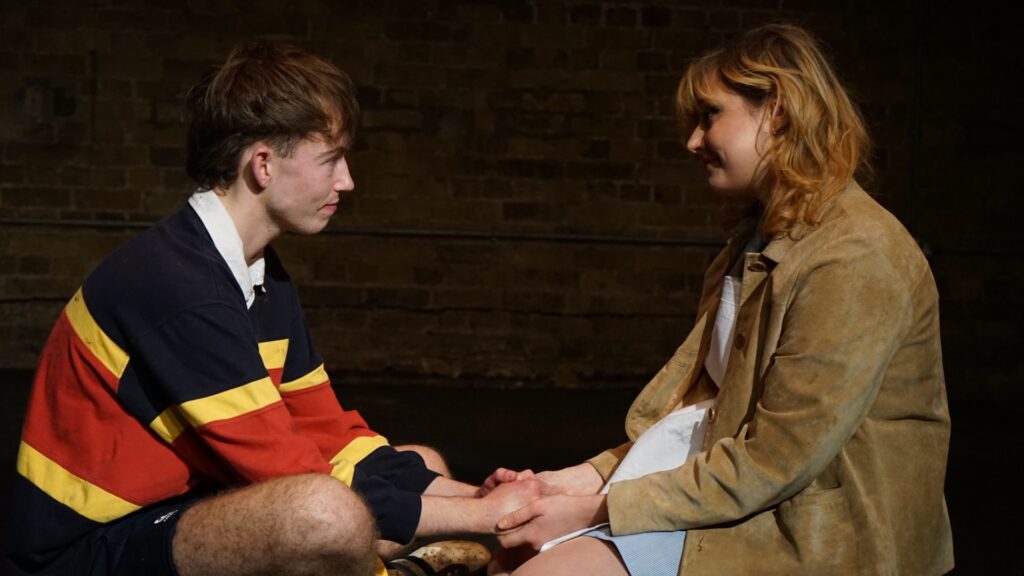Jonathan Brooks-Jones asks why artists are turning to video as a medium
Artes Mundi is a biennial competition at National Museum Wales that showcases emerging artists from around the world, celebrating statements on the human condition. While there are paintings, drawings and photographic works, most of the gallery space in this year’s exhibition at Cathays Park, Cardiff (showing until 6 June) is given to video art. This has drawn a mixed reaction from the public, many of whom complain that there is ‘too much video’.
This might have been expected, but it does seem a little odd that people aren’t excited about the chance to experience what is for many a new art form. In fact, it’s not even that new. Video art has existed in the contemporary form since the 1960s, and in other forms even longer. However, Cardiffians are rarely exposed to it, as there is something of a lack of modern art galleries in Cardiff. Video art can perhaps be difficult to interpret for one who is not acquainted with it. What are the central ideas explored in video art, and why are artists turning to video as a medium?
A common objection is that the artist could have or should have made a movie instead. In fact, one of the most interesting aspects of video art is its capacity to deconstruct our experience and understanding of movies and television.
One of the short-listed artists whose work questions the rigidity of the traditional forms of moving images on a screen is Bulgarian artist, Ergin Çavuşoğlu. His work explores the theme of migration and boundaries in two pieces, Voyage of No Return and Liminal Crossing. The former uses five screens. Four are mounted almost side by side at different heights and one placed on the floor, facing up and angled slightly towards the viewer. The central screen features the dialogue and beneath it is the fifth screen, with Welsh subtitles projected onto it.
 Here, the method of splitting the film onto different screens is used to establish locality and to generate an atmosphere akin to the calm before the storm. The fragmentation of the screens also encourages the viewer to interact with the work, perhaps walking up close to a screen and blocking the projection casting a silhouette on the screen. In some way this enables the viewer to become a part of the piece, and to realise that the distinction between art and viewer may not always be necessary. In previous exhibitions Çavuşoğlu has projected his films directly onto the floor, so the audience can literally walk through it.
Here, the method of splitting the film onto different screens is used to establish locality and to generate an atmosphere akin to the calm before the storm. The fragmentation of the screens also encourages the viewer to interact with the work, perhaps walking up close to a screen and blocking the projection casting a silhouette on the screen. In some way this enables the viewer to become a part of the piece, and to realise that the distinction between art and viewer may not always be necessary. In previous exhibitions Çavuşoğlu has projected his films directly onto the floor, so the audience can literally walk through it.
Video art also maintains and updates existing ideas in the art world. One of these is the treatment of light, building on the inheritance of the 19th Century Impressionists. Light must first of all play a ‘physical’, and perhaps rather obvious role, in that it is light that enables us to see the works. This is true in painting and other forms of art. However, its role is extended in video art. Here, light must first hit the subject, reflect into the artist’s eye and the lens of the camera. It is then shone through the film in order to project the image onto the screen. From there it is reflected into the eyes of the audience. For video artists as for the Impressionists, the importance of light has taken on a role of conceptual importance, in which the art comes to discuss the effect of light.
For example, at the Artes Mundi, a video installation entitled Per Speculum by Albanian artist, Adrian Paci draws our attention to the importance of light. In the final, wide-angle shot, a group of children sit in a large tree and use the broken pieces of a mirror to reflect the sunlight back to the camera. This draws our attention to the distance traveled by light. Paci also draws our attention to the projector, a unique feature of video art. He does this by using one that is particularly old-fashioned and noisy (however, against the artist’s intention, for health and safety reasons it had to be sealed in a metal box, thus trapping much of the sound it makes).
For many, video and film may seem too commercial, because we are so used to it being used in television, movies and adverts. While some adverts, music videos and movies may be termed ‘artistic’, video art’s focus is directed much more exclusively on the artistic capacity of video.
The power of video art sometimes lies in the very fact that we are so used to seeing video and film in other forms. This means that when we are asked to look at video as an artistic form, and it contains images we are not expecting, the effect is automatically, at first, surreal. Imagine tuning into the Chris Moyles show and hearing the music of Arnold Schoenberg! Hearing music that lacks a tonal centre is likely to be a new and unsettling experience for the average Radio 1 listener in any case, but it would be doubly surprising because that is the last place one would expect to hear atonal music. Similarly, we are so used to the kind of content normally contained on video, that when we see something more artistic and adventurous than, say, Coronation Street or Big Brother, it tends to shock. This can often give video art an added depth of impact.
Indeed, as a burgeoning art form video is conceptually and aesthetically rich. It provides the artist with unique opportunities to experiment with a vast array of elements: screen, soundtrack, projector, content, style, and others. While it may require a little more effort to unravel the meaning of a piece, it can be a highly rewarding and unique experience, one that is likely to become easier the more often we’re exposed to it. It is helpful, therefore, that Artes Mundi employs a team of ‘live guides’ who have met the artists and discussed the pieces with them. They act as the link between the artist and the public that is all-too-often missing from modern art galleries. They provide a valuable insight into the meaning and history behind the works. They also write blogs about the pieces, which can be read here.
This is a shortened version of a longer essay, to be found here.







You made some good points there. I did a search on the topic and found most people will agree with your opinion.
Easily, the post is actually the best on this deserving topic. I fit in with your conclusions and will eagerly look forward to your upcoming updates.
Pretty insightful post. Never thought that it was this simple after all. I had spent a good deal of my time looking for someone to explain this subject clearly and you’re the only one that ever did that. Kudos to you! Keep it up